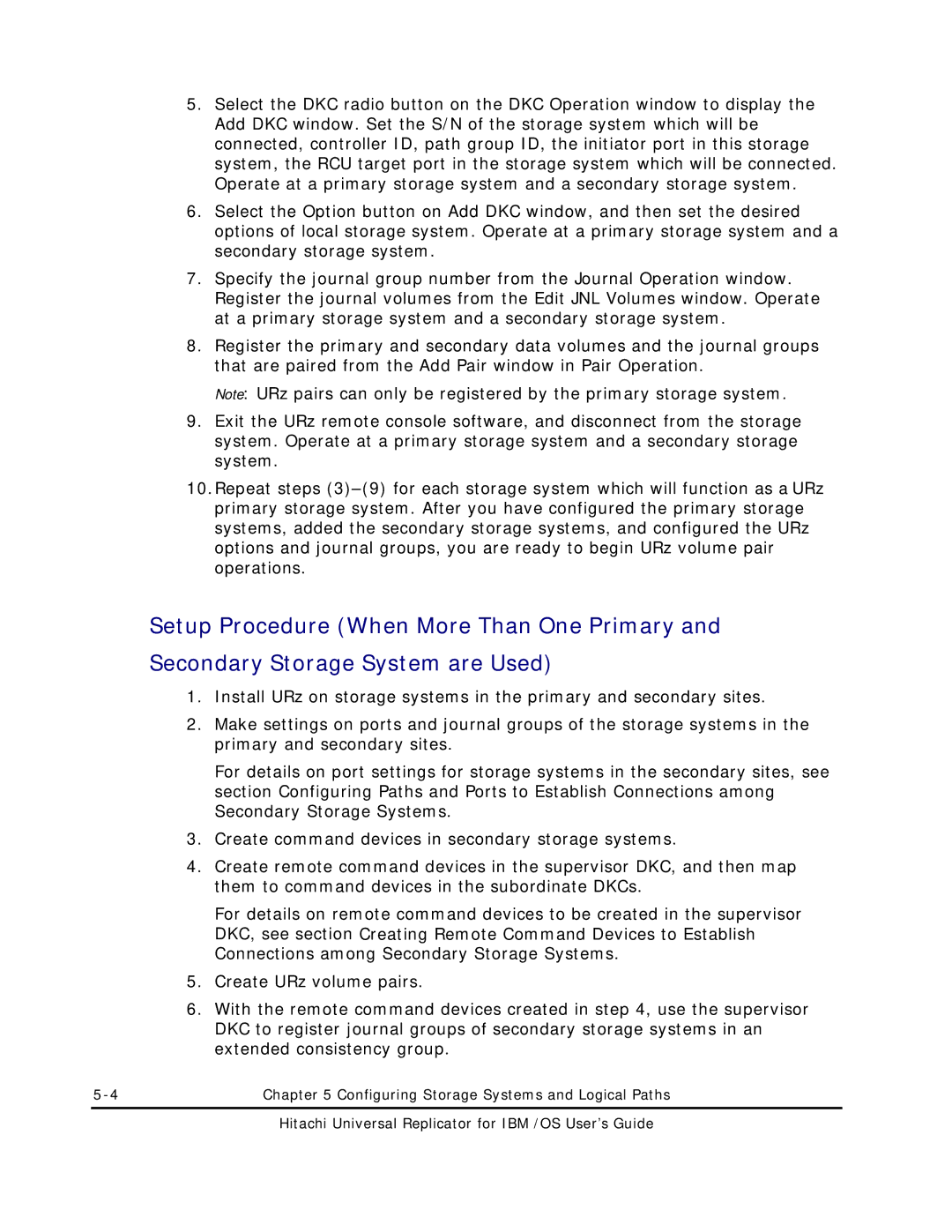5.Select the DKC radio button on the DKC Operation window to display the Add DKC window. Set the S/N of the storage system which will be connected, controller ID, path group ID, the initiator port in this storage system, the RCU target port in the storage system which will be connected. Operate at a primary storage system and a secondary storage system.
6.Select the Option button on Add DKC window, and then set the desired options of local storage system. Operate at a primary storage system and a secondary storage system.
7.Specify the journal group number from the Journal Operation window. Register the journal volumes from the Edit JNL Volumes window. Operate at a primary storage system and a secondary storage system.
8.Register the primary and secondary data volumes and the journal groups that are paired from the Add Pair window in Pair Operation.
Note: URz pairs can only be registered by the primary storage system.
9.Exit the URz remote console software, and disconnect from the storage system. Operate at a primary storage system and a secondary storage system.
10.Repeat steps
Setup Procedure (When More Than One Primary and Secondary Storage System are Used)
1.Install URz on storage systems in the primary and secondary sites.
2.Make settings on ports and journal groups of the storage systems in the primary and secondary sites.
For details on port settings for storage systems in the secondary sites, see section Configuring Paths and Ports to Establish Connections among Secondary Storage Systems.
3.Create command devices in secondary storage systems.
4.Create remote command devices in the supervisor DKC, and then map them to command devices in the subordinate DKCs.
For details on remote command devices to be created in the supervisor DKC, see section Creating Remote Command Devices to Establish Connections among Secondary Storage Systems.
5.Create URz volume pairs.
6.With the remote command devices created in step 4, use the supervisor DKC to register journal groups of secondary storage systems in an extended consistency group.
Chapter 5 Configuring Storage Systems and Logical Paths |
